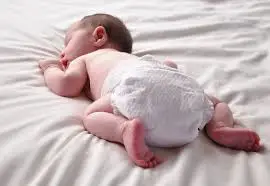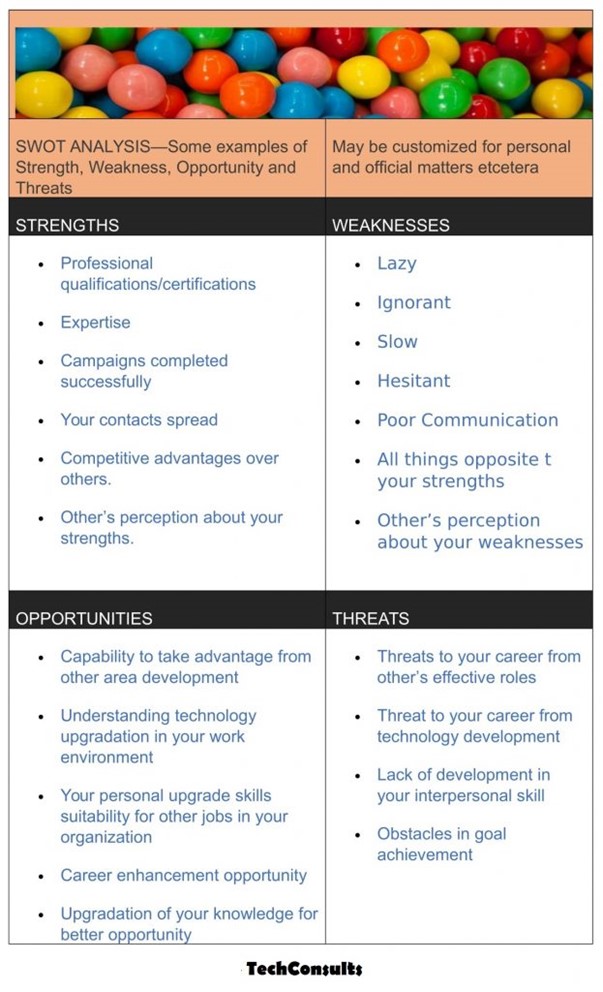(Chronotype – a person’s natural inclination about the times of day when he prefers to sleep or when he is most alert or energetic.)

Excerpts – A workforce person’s chronotype is the propensity ( a natural tendency to behave) for the individual to sleep at a particular time during a 24-hour period thereby affecting the output of the individual and the entire workforce. As such it is necessary to understand the chronotypes in the workforce
| Plese refer to the following blog for better understanding of the blog under reference. Understand Biological Clocks or Body Clocks, and Circadian Rhythm. https://techconsults.in/understand-biological-clocks-or-body-clocks-and-circadian-rhythm-a-workplace-requirement/ |

Topics Discussed
General About Chronotypes
The ideal sleep duration
Personality Traits of Chronotypes
Challenges in Determining the Chronotype Category
Chronotypes
Bear Chronotype
Wolf Chronotype
Lion Chronotype
Dolphin Chronotype
Application of Chronotype for Boosting Productivity
Changes in Chronotypes
Disadvantages of Improper Sleep
Oversleep ( 8 to 9 hours) disadvantages
General About Chronotypes
In a 24-hour period cycle, an individual naps natural tendency to follow a sleep pattern. These patterns or timings of sleep timings categorize the person as a type of personality known as a chronotype.
A person’s chronotype is the propensity ( a natural tendency to behave) for the individual to sleep at a particular time during a 24-hour period.
While the person’s chronotypes can’t change but using available wisdom, it is easy to understand them and their sleep patterns to utilize judiciously for workplace operations for better schedule organization and better productivity.
Understanding the own circadian clock and its working can assist in getting good sleep at night for a healthy and happy life, full of energy to take up the ‘works after rest’.

The best sleep duration ranges from 7 to 9 hours for most people. However, exceptions are there where the person is continuously efficient even after lesser sleep. The sleep and wake-up time may differ and depends on chronotype.
To avoid the after-effects of sleep, it is always best to sleep or nap when feeling sleepy. But it is not always possible at the workplace. Rest place is provided at the workplace as the patterns of sleep are different for different people and depend on their biological clocks. Such rest places must not be misused.
Fatigue and tiredness symptoms, if persists, are the after-effects of bad sleep durations, or the sleep durations in use are not synced to the biological clock.
Know your chronotypes and manage your sleep time accordingly. Morning risers get sleepy early. The night owls should not try to sleep early. In nutshell make a sleep and wake-up schedule after understanding the chronotype and managing it.
Personality Traits of Chronotypes
The personality traits depend on:
Times of sleep
Times of awakening
Times of cognitive effectiveness
Times of physical effectiveness
The efficiency and effectiveness, and health and illness aspects are also associated with different types of chronotypes.
Generally, there are two types of personality traits (chronotypes). But are further subdivided into new form categories named after animals and shall be discussed later.
Morning Ness – rise early in the morning and sleep early at night. (Advanced sleep period; most active and alert and productive in the morning). Also known as early birds.
Evening Ness – rise late and sleep late (delayed sleep period; most active, productive, and alert in the evening). Also known as night owls.
Sleep timings get affected by and so also the circadian rhythms
Challenges in Determining the Chronotype Category
The following factors are responsible for challenges in the chronotype category.
Existing and varying environment changes
Development of technology
Social scenario
Genetic changes
Use electronic equipment
Jet lag
Political environment
Stakeholder requirements
Economic factors
Changes with age growth – Employed persons have their sleep time set as per their productivity requirements. Retired persons (senior citizens not on the job) may be their “early to bed and early to rise” schedule
The circadian rhythm changes related to age are also valid for school children (ranging from pubic age to adulthood age.) This is valid for all chronotype personalities such as bear, wolf, tiger, and dolphins.
More dependence on IQ
Less importance to use emotional intelligence
Lack of awareness and training
Indecent behaviour
Immoral conduct
Avoidance of professional ethics and values.
Unlawful actions and habits
Humans are normally diurnal creatures. They are active in the daytime. Chronotype is the natural inclination of your body to sleep at a certain time, or what most people understand as being an early bird versus a night owl. In addition to regulating sleep and wake times, chronotype has an influence on appetite, exercise, and core body temperature.
These changes can cause
Sleep disorders,
Obesity,
Diabetes,
Depression,
Bipolar disorder,
| Bipolar disorder, previously known as manic depression, is a mood disorder characterized by periods of and periods of abnormally-elevated happiness that last from days to weeks each. |
Seasonal affective disorder
| Seasonal affective disorder (SAD) is a mood disorder subset, in which people who have normal mental health throughout most of the year exhibit depressive symptoms at the same time each year, most commonly in winter. |
Chronotype
The characteristics of different chronotypes are discussed below. The personality traits and timings may be common in the chronotypes\
The important is that everyone requires sleep ( Rest ). And everybody acts ( works ). Rest after work and work after rest is necessary for human and non-human. The ultimate requirement is productivity. Therefore, know yourself (Your chronotype) and know others (Chronotype) at the workplace, and manage yourself and others for the desired output. Management science and art exist for human resources management ( HRM ) and therefore HRM techniques in modern-day
environment can be effectively and efficiently used.
| Chronotype | Sleep time | Wake up time | Hard Work time to Light work time and relax | Relax | Ready to sleep |
| Bear | 11 p.m.–7 a.m. | 7–8 am | 10 a.m.–10 p.m.: | 4–10 | 10–11 p.m.: |
| Wolf | 12–7:30 | 7:30–9 am | 10 am to 10 pm | 10 p.m.–12 am | |
| Lion | 10 p.m. – 6 am | 6–7 am | 8 a.m.–9 pm | 9–10 p.m | |
| Dolphin | 12–6:30 a.m.: | 6:30–7:30 a.m | 8 am -10 pm | 10–11:30 p.m |

| Bear Chronotypes – Almost 50 percent of human beings belong to this category in their schedule of the day as shown below |
| The bear’s sleep time ranges from 11 pm to 7 am (approximately). Human beings resemble this sleep time is called bear chronotypes. These human beings are charged to do the work up to 2 pm. Thereafter a small rest/sleep these are again active for lighter works. |
| Chronotype | Sleep time | Wake up time | Hard Work time to Light work time and relax | Relax | Ready to sleep |
| Bear | 11 p.m.–7 a.m. | 7–8 am | 10 a.m.–10 p.m.: | 4–10 | 10–11 p.m.: |

| Wolf Chronotypes – Almost 15 percent of human beings belong to this category in their schedule of the day as shown below. |
| The wolf’s sleep time ranges from 12 pm to 7:30 am (approximately). Human beings resemble this sleep time is called wolf chronotypes. These human beings are introverted, creative, and self-charged. Most active in the afternoon and late night but reuire to refresh in between |
| Chronotype | Sleep time | Wake up time | Hard Work time to Light work time and relax | Relax | Ready to sleep |
| Wolf | 12–7:30 | 7:30–9 am | 10 am to 10 pm | 10 p.m.–12 am |
Wolves’ Chronotypes have their late schedule of work – start late and work late. Initially are slow but pull on later. Do the best in the afternoon and late are night, but before they charge themselves with rest, food, and break. Good to attend meetings and late general office timings

| Lion Chronotypes – Almost 15 percent of human beings belong to this category adhe their schedule of the day as shown below |
| Thelion’s lion sleep time ranges from 8 am to 9 pm(approximately). Human beings resemble these sleep times called lionchronotypes and have personality traits of Charisma, leadership, and early risers. Understand their time and worvaluednd utilizes it accordingly at workplace operations. |
| Chronotype | Sleep time | Wake up time | Hard Work time to Light work time and relax | Relax | Ready to sleep |
| Lion | 10 p.m. – 6 am | 6–7 am | 8 a.m.–9 pm | 9–10 p.m |
Lions are energetic in the morning. The people of this chronotype take up all important tasks in the fresh state.

| Dolphin Chronotypes – Almost 10 percent of human beings belong to this category in their schedule of the day as shown below. |
| The dolphin’s sleep time ranges from 12 am to6;30 am(approximately). Human beings resemble these sleep times called dolphin chronotypes and have personality traits of a scattered brain (a person who is forgetful, disorganized, or unable to concentrate or think clearly ) but highly intelligent. These persons break open or apart suddenly and violently, especially as a result of an impact or internal pressure, and avoid social interactions |
| Chronotype | Sleep time | Wake up time | Hard Work time to Light work time and relax | Relax | Ready to sleep |
| Dolphin | 12–6:30 a.m.: | 6:30–7:30 a.m | 8 am -10 pm | Relax before sleep | 10–11:30 p.m |
The person is an insomniac (a person who is regularly unable to sleep )
Application of Chronotype for Boosting Productivity
As discussed above every person is chronotype and has strengths and weaknesses. One must have a SWOT analysis of self in reference to work requirements. And utilize the analyzed output for productivity at the workplace.

Changes in Chronotypes
Science assumes that the chronotype is dependent on environmental, genetic, and age-related factors and influences hormone levels, metabolic function, body temperature, etc.
Chemicals in the brain impact body’s circadian rhythms and thus, vigorously impact the chronotype. Due to this biological activity, it’s difficult to completely switch chronotypes.
But with advancement in age, the biological change in the body affects the chronotype, and changes take place.
Avoid coffee at night. It will your sleep. Coffee taken during the daytime helps one to remain in a wakened state.
Following the natural day-night cycle at pre-defined timings shall further help improve the chronotype.
All chronotypes (persons) are mostly drowsy between 1 p.m. and 3 p.m. ( not good for workplace operations – may take coffee or walk or get entertainment) and between 2 a.m. and 4 a.m. ( good for all chronotypes)
The chronotype sleep and wake-up schedule should be maintained even on the rest days, otherwise one may feel discomfort in the “work after rest” period next time.
| Age | Recommended amount of sleep |
| 0–3 months | 14–17 hours total |
| 4–12 months | 12–16 hours total |
| 1–2 years | 11–14 hours total |
| 3–5 years | 10–13 hours total |
| 9–12 years | 9–12 hours total |
| 13–18 years | 8–10 hours total |
| 18–60 years | at least 7 hours per night |
| 61–64 years | 7–9 hours per night |
| 65 years and older | 7–8 hours per night |
| https://www.healthline.com/health |

Effects of Sleep Depriviation
Immune disorders
Diabetes
High blood pressure
Heart problems
Obesity
Depression
Decreased efficiency
Experience accidents,
Irritability,
Forgetfulness.
Oversleep ( 8 to 9 hours) disadvantages
Affects health and wellness
Depression
Irritability
Cardiovascular issues
Anxiety
Parkinson’s disease
Diabetes
Heart disease
Thyroid disorders
Asthma
Early to bed and early to rise is an ideal day-night requirement and it provides the best outputs. This pattern matches our biological tendencies to adapt our sleep pattern to that of the sun. But everybody cannot do this. (Only about 50 percent can do. It also depends on the chronotype of the person.
But with the productivity requirement round the clock, it is not always possible to follow an ideal approach and depends on the circadian rhythms of the chronotypes.
In both cases, one must get the right amount of sleep as discussed.



